Home Remedies For Vaginal Yeast Infection
By Dr. Charmi Shah +2 more

Get,

to manage your symptom
Get your,


4 Cr+ families
benefitted

OTP sent to 9988776655



You’ve successfully subscribed to receive
doctor-approved tips on
Whatsapp

Get ready to feel your best.

Hi There,
Download the PharmEasy App now!!


Register to Avail the Offer
Send OTPBy continuing, you agree with our Privacy Policy and Terms and Conditions

Hi There,
Sign up on PharmEasy now!!
Trusted by 4 crore+ families

OTP sent to 9988776655



You have unlocked 25% off on medicines




Code: NU25

Comments


Leave your comment here
By Dr. Charmi Shah +2 more
Table of Contents
Candida is a type of fungus that commonly causes vaginal candidiasis, which is one of the most common types of vaginitis1. Infection of the vagina is very common, of which yeast infections such as vaginal candidiasis are the second most common2. Yeast is always present in our body but may cause an infection when it overgrows. Conditions that may cause the loss of chemical balance, like pregnancy, antibiotic medications, diabetes etc., may lead to the occurrence of a vaginal yeast infection.
This guide describes the causes, symptoms and a few possible home remedies for vaginal yeast infections. It is important to note that this condition requires medical intervention, therefore, do not self-diagnose or take medications without proper consultation3.

A fungus called Candida causes vaginal yeast infections. This type of yeast is normally found in small amounts in the body and helps to maintain the natural balance of the microbiome. However, when this balance is disrupted, Candida can multiply rapidly and result in an yeast infection known as vulvovaginal candidiasis or vaginal candidiasis. This condition is characterised by symptoms of swelling, pain, and vaginal discharge3.
Some of the factors which may lead to the risk of vaginal yeast infections are:1,3,5
Although Candidal vaginal infections are very common and may resolve easily with topical treatment, if left untreated, this infection may result in complications characterised by redness, swelling and sometimes cracks in the walls of the vagina, which may be severely painful.
Dr Ashish Bajaj, M.B.B.S M.D. in Clinical Pharmacology and Toxicology
A few typical signs that can be noticed in the vagina if you have a vaginal yeast infection. They are as follows: 3,6
Some home remedies or natural methods may be helpful for vaginal yeast infections. However, using the following remedies is highly subjective and requires further research. They should only be used under the guidance of a medical professional.
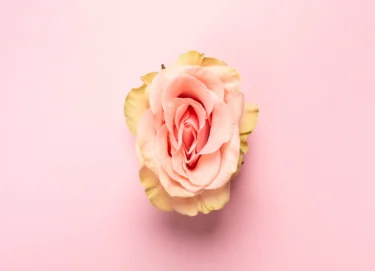
Doctors may suggest practices to help take care of the vulva, the outer part of female genitals which acts as the gate to the uterus and protects it as well as the vagina. The doctor may recommend tips such as not washing the vulva excessively and suggest not using certain irritants like perfumed soaps, vaginal sprays or powders and bubble baths4.
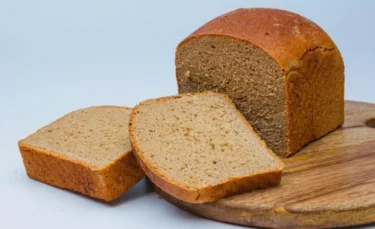
Research has shown that eating bread made with yeast may lead to repeated episodes of vaginal yeast infections. Another study showed that taking refined sugars may increase the risk of symptoms of vaginal yeast infections. Therefore, a diet low in yeast and refined sugars may help manage vaginal yeast infections. However, more research is needed to support these claims. Consult your doctor before making any changes to your diet3.
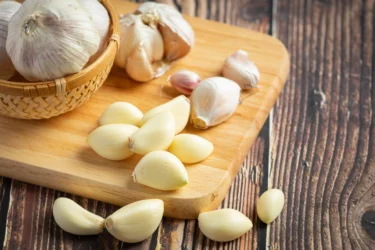
Garlic might have antifungal actions. Studies have shown that garlic might have the potential to help in vaginal yeast infections. The active compound in garlic, Allicin, might reduce fungal growth. Do not insert garlic directly into the vagina.
However, more studies on animals and humans is required to support its effectiveness. Garlic may also cause chemical burns or allergic reactions. Therefore, please consult a doctor before using this.6,7
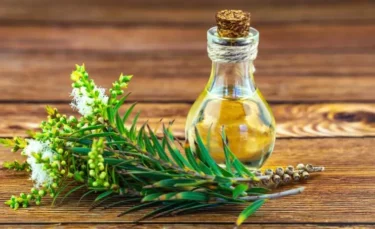
Several studies6 has found that tea tree oil may be beneficial as a herbal antifungal and antibacterial agent. Adding tea tree oil to the bath routine or using tea tree pessaries (a medicinal capsule inserted into the vagina) may be helpful. They products are also available as gels and creams. However, these products may cause severe irritation in some people so should only be used under medical supervision. In a study, it was hypothesised the effect of tea tree oil might depend on the acidic environment of the vagina. Therefore, the effects on the vagina might differ from one person to another.
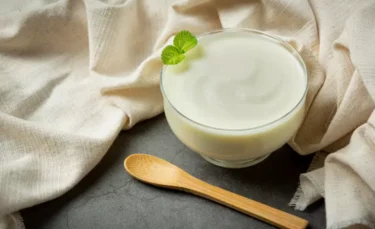
Probiotics are known as good bacteria which may help in vaginal yeast infections. The recolonisation (refilling the lost bacteria) of bacteria, especially lactobacillus, may be helpful. Therefore, your doctor may recommend eating yoghurt, probiotic capsules, etc. and may also prescribe probiotic creams that have to be applied to the vagina6.

Creams with boric acid and other antifungal agents may be helpful against repeated vaginal yeast infections. Pessaries are certain medications that need to be inserted into the vagina. The pessaries have an antifungal agent that is enclosed in a gelatine capsule. When the gelatine capsule is placed in the vagina, it dissolves due to the body heat and the medicine is released. As the medicine is directly released into the vagina, it might act directly and help against the vaginal infection. It might be more effective than creams. Therefore, your doctor might suggest that you use them3,6.

Tight-fitting pants, pantyhose and synthetic underwear might lead to sweating. They are best avoided to prevent any fungal infections. It is better to use cotton clothing and underwear to relieve fungal infections. However, this does not have significant scientific evidence . Sun-drying or ironing freshly washed underwear may help sterilise it, reducing the risk of vaginal yeast infection1,3,4.
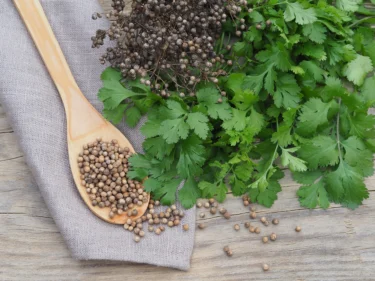
Research8 suggests that coriander seeds and leaves may be helpful against vaginal yeast infections. To use coriander seeds, you have to soak a few coriander seeds in water overnight. Straining the water and drinking it on an empty stomach may be beneficial. However, ensure that you consult a doctor before using this, to make sure it is appropriate for your situation.
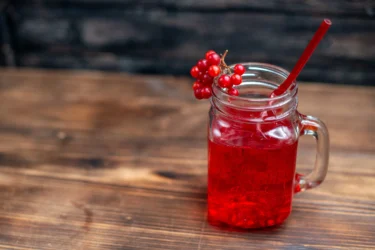
Drinking cranberry juice may also be helpful in vaginal yeast infection and drinking fresh cranberry juice without added sugars may be even better. However, more research is needed to support the benefits of cranberry juice in vaginal infections. A doctor’s guidance is advised to evaluate the best treatment for your condition9.
A few other home remedies for vaginal yeast infections are as follows:10
Ensure that you consult a doctor before using any home remedy.
Vaginal yeast infections are usually caused by a type of yeast called Candida albicans. It is normal for this yeast to live in the mucous membranes lining the genitals. Women should avoid using products that do more harm than good in excess, like vaginal douches or female intimate hygiene products. These products disturb the natural balance of germs and increases the risk of infections.
Dr. M.G. Kartheeka, MBBS, MD(Pediatrics)
There are insufficient studies that show the benefits of using herbal and home remedies which indicates a need for large-scale human studies to establish the true extent of the benefits of these home remedies on human health. Thus, home remedies should only be taken with caution and never as a substitute for medical treatment.
Also Read: Simple Home Remedies For Fungal Infections!
You should seek medical help from a doctor under the following circumstances:
If you are pregnant do not self-medicate for vaginal infections, immediately seek the guidance from a doctor .You must not rely on home remedies alone for the treatment of the condition and should consult a qualified doctor for any advice for condition if the symptoms do not improve with home remedies.
Also Read: What Is PCOD? Know It’s Symptoms, Causes & Treatment
Vaginal yeast infection is caused by a specific fungus or yeast called Candida. This yeast is normally present in the body but causes an infection when there is a disruption of the chemical balance in our body. As a result, you may experience redness and itching with white, thick, cottage-cheese consistency discharge from the vagina. It is advised to visit a doctor who can help guide you with the appropriate medicines and home remedies. Some tips that your doctor may suggest is to maintain good vulvar hygiene, wear breathable fabrics, and manage blood sugar levels to reduce the risk of recurrence. It is important to seek medical help to maintain overall reproductive health.
Also Read: Effective Home Remedies For Vaginal Dryness
Home remedies for vaginal yeast infections include probiotics, garlic, tea tree oil, cranberry juice, coriander seeds, lady’s finger etc. It is also observed that avoiding sugars and yeast-containing bread may be beneficial. However, more research is required to prove these effects in vaginal yeast infections. Consult a doctor before using any home remedy3.
You should consult a doctor if you have a white vaginal discharge as it can be due to many reasons. Do not rely on home remedies, instead consult a doctor at the earliest for early diagnosis and treatment.
Garlic has a bioactive compound (allicin), which may have beneficial antifungal and antibacterial properties to help in the management of yeast infections. It may also cause chemical burns and allergies. More research is needed to support its use, be cautious when using home remedies and ensure you consult a doctor before using them.
Tea tree oil may be beneficial in managing vaginal yeast infections. Your doctor might recommend adding it to baths or as pessaries. However, more research is needed to explore its potential side effects in humans. Always seek medical guidance before using this essential oil.
Apple cider vinegar may or may not be effective against yeast infections. More research is needed to support its effect against yeast infections. Therefore, always consult a doctor before using such home remedies.
Probiotics may help in vaginal yeast infection. However, more research is needed to support these claims and the use of probiotics as a remedy should be done only with the guidance of a doctor.
1.Jeanmonod R, Jeanmonod D, Chippa V. Vaginal Candidiasis (Vulvovaginal Candidiasis) [Internet]. National Library of Medicine. StatPearls Publishing; 2024 [cited 2025 Apr 17]. Available from: https://www.ncbi.nlm.nih.gov/books/NBK459317/
2. Madhavan P. Introduction Vulvovaginal candidiasis (VVC) is the second most common cause of vaginitis (inflammation of vaginal) after bacterial vaginosis and trichomoniasis.1 Approximately, 75% of women worldwide experience a single episode of VVC and 50% of them [Internet]. Academia.edu. 2020 [cited 2025 Apr 17]. Available from: https://www.academia.edu/80897958/Introduction_Vulvovaginal_candidiasis_VVC_is_the_second_most_common_cause_of_vaginitis_inflammation_of_vaginal_after_bacterial_vaginosis_and_trichomoniasis_1_Approximately_75_of_women_worldwide_experience_a_single_episode_of_VVC_and_50_of_them
3. World. Candidiasis (yeast infection) [Internet]. Who.int. World Health Organization: WHO; 2025 [cited 2025 Apr 17]. Available from: https://www.who.int/news-room/fact-sheets/detail/candidiasis-(yeast-infection)
4. Vaginal Candidiasis (Yeast Infection). Journal of Midwifery & Women’s Health [Internet]. 2021 Nov [cited 2025 Apr 17];66(6):825–6. Available from: https://onlinelibrary.wiley.com/doi/10.1111/jmwh.13326
5.Torondel B, Sinha S, Mohanty JR, Swain T, Sahoo P, Panda B, et al. Association between unhygienic menstrual management practices and prevalence of lower reproductive tract infections: a hospital-based cross-sectional study in Odisha, India. BMC Infectious Diseases [Internet]. 2018 Sep 21 [cited 2025 Apr 17];18(1). Available from: https://pmc.ncbi.nlm.nih.gov/articles/PMC6150969/
6. Satora M, Grunwald A, Zaremba B, Frankowska K, Żak K, Tarkowski R, et al. Treatment of Vulvovaginal Candidiasis—An Overview of Guidelines and the Latest Treatment Methods. Journal of Clinical Medicine [Internet]. 2023 Aug 18 [cited 2025 Apr 17];12(16):5376. Available from: https://www.ncbi.nlm.nih.gov/pmc/articles/PMC10455317/
7. Bekut M, Brkić S, Kladar N, Gavarić N, Božin B. Garlic clove applied as vaginal suppository – A case report. Complementary therapies in medicine [Internet]. 2018 Aug [cited 2025 Apr 17];39:97–100. Available from: https://pubmed.ncbi.nlm.nih.gov/30012400/
8. Freires I de A, Murata RM, Furletti VF, Sartoratto A, Alencar SM de, Figueira GM, et al. Coriandrum sativum L. (Coriander) Essential Oil: Antifungal Activity and Mode of Action on Candida spp., and Molecular Targets Affected in Human Whole-Genome Expression. Mylonakis E, editor. PLoS ONE [Internet]. 2014 Jun 5 [cited 2025 Apr 17];9(6):e99086. Available from: https://www.ncbi.nlm.nih.gov/pmc/articles/PMC4047076/
9. Rane HS, Bernardo SM, Howell AB, Lee SA. Cranberry-derived proanthocyanidins prevent formation of Candida albicans biofilms in artificial urine through biofilm- and adherence-specific mechanisms. Journal of Antimicrobial Chemotherapy [Internet]. 2013 Oct 10 [cited 2025 Apr 17];69(2):428–36. Available from: https://pmc.ncbi.nlm.nih.gov/articles/PMC3937597/Available from: https://pmc.ncbi.nlm.nih.gov/articles/PMC3937597/
10. The Inhibitor Activity Test of Green Okra Fruit Fraction (Abelmoschus Esculentus) Against Candida Albicans [Internet]. Iocspublisher.org. 2025 [cited 2025 Apr 17]. Available from: https://midwifery.iocspublisher.org/index.php/midwifery/article/view/617
Disclaimer: The information provided here is for educational/awareness purposes only and is not intended to be a substitute for medical treatment by a healthcare professional and should not be relied upon to diagnose or treat any medical condition. The reader should consult a registered medical practitioner to determine the appropriateness of the information and before consuming any medication. PharmEasy does not provide any guarantee or warranty (express or implied) regarding the accuracy, adequacy, completeness, legality, reliability or usefulness of the information; and disclaims any liability arising thereof.
Comments

Leave your comment...

View all comments(1)
You may also like
These remedies are used internally or externally? What are thr procedures?